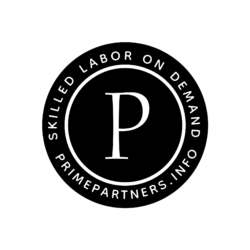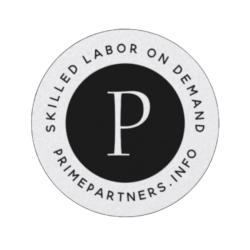Commercial Lighting Technician Interview Guide
Overview of Certifications and Educational Background
Required and Recommended Certifications
- Journeyman Electrician License: Most employers require a valid journeyman electrician license, which certifies that the technician has completed an apprenticeship and passed the necessary exams.
- Certified Lighting Management Consultant (CLMC): Offered by the International Association of Lighting Management Companies (NALMCO), this certification is highly recommended for demonstrating advanced knowledge in lighting management.
- Lighting Efficiency Professional (CLEP): Provided by the Association of Energy Engineers (AEE), this certification indicates proficiency in energy-efficient lighting solutions.
- OSHA Safety Certification: Safety is paramount in electrical work, and OSHA certification demonstrates a strong commitment to workplace safety practices.
Educational Background
- High School Diploma or GED: Basic requirement for entering the field.
- Associate Degree in Electrical Technology: While not always required, an associate degree can provide a strong foundational knowledge in electrical systems and increase job prospects.
Industry Qualifications
- Hands-on Experience: Employers look for candidates with substantial real-world experience in installing, maintaining, and repairing lighting systems.
- Knowledge of Lighting Design: Understanding of principles like photometrics, lumens, and color temperature can be beneficial.
- Familiarity with Building Codes: Knowledge of local and national electrical codes ensures compliance and safety.
Interview Questions and Answers
Technical Questions
Question 1: What are the steps to properly install a commercial LED lighting system?
Answer:
-
Step 1: Assessment and Planning
- Example: Conduct a thorough assessment of the building layout and lighting needs. Calculate the total lumens required based on space usage (e.g., office vs. warehouse).
- Outcome: Creates a blueprint that ensures adequate lighting levels and energy efficiency.
-
Step 2: Selection of Fixtures
- Example: Choose LED fixtures that meet the calculated lumens and color temperature. Consider fixtures with dimming capabilities for flexibility.
- Outcome: Provides a balance between performance and energy savings.
-
Step 3: Installation
- Example: Follow manufacturer instructions and local electrical codes. Use appropriate tools and PPE.
- Pitfalls to Avoid: Do not overload circuits; ensure all connections are secure.
-
Step 4: Testing and Calibration
- Example: Test each fixture for proper operation. Calibrate dimming controls and sensors.
- Outcome: Ensures the system operates as designed, reducing energy waste.
-
Follow-up Considerations: Discuss maintenance plans and warranties with the client.
Question 2: How do you troubleshoot a lighting circuit that keeps tripping the breaker?
Answer:
-
Initial Diagnosis
- Example: Inspect the circuit for visible damage or wear, such as frayed wires or corroded connections.
- Outcome: Identifies obvious issues quickly.
-
Testing for Short Circuits
- Example: Use a multimeter to check for continuity between hot and neutral wires.
- Outcome: Confirms if a short circuit is causing the breaker to trip.
-
Isolating the Problem
- Example: Disconnect fixtures and test each segment of the circuit independently.
- Outcome: Pinpoints the faulty section of the circuit.
-
Common Pitfalls: Avoid resetting the breaker repeatedly without identifying the root cause, as this can lead to further damage.
-
Follow-up: Discuss the importance of regular maintenance to prevent recurring issues.
Behavioral Questions
Question 3: Describe a time when you had to work as part of a team to complete a large lighting installation project. How did you contribute to the team’s success?
Answer:
-
Scenario: Worked on a team tasked with retrofitting an office building with energy-efficient lighting.
-
Role and Contribution: Assigned to lead the planning phase, ensuring all materials were sourced and the timeline was adhered to.
-
Outcome: The project was completed ahead of schedule with a 20% reduction in projected costs due to efficient resource management.
-
Best Practices: Emphasize clear communication and task delegation based on team members’ strengths.
-
Pitfalls to Avoid: Do not assume responsibilities without consulting the team, as this can lead to overlap and confusion.
-
Follow-up: Discuss how you handled any conflicts or challenges within the team.
Situational Questions
Question 4: How would you handle a situation where a client is dissatisfied with the lighting installation due to insufficient brightness in certain areas?
Answer:
-
Initial Response
- Example: Acknowledge the client’s concerns promptly and assure them that you will investigate the issue.
- Outcome: Builds trust and shows commitment to quality service.
-
Assessment
- Example: Conduct a walkthrough with the client to identify the specific areas of concern.
- Outcome: Provides a clear understanding of the client’s expectations.
-
Solution Implementation
- Example: Reassess the lighting design and adjust fixture placement or add supplemental lighting as needed.
- Outcome: Ensures the lighting meets the client’s needs and specifications.
-
Reasoning: Prioritize client satisfaction and be willing to make adjustments to meet their expectations.
-
Follow-up: Discuss how you would prevent similar issues in future projects by involving clients in the planning process.
Problem-Solving Questions
Question 5: A lighting control system is malfunctioning, causing lights to flicker intermittently. How do you approach diagnosing and resolving the issue?
Answer:
-
Initial Inspection
- Example: Check for loose connections or damaged wiring in the control system.
- Outcome: Identifies simple issues that can be quickly resolved.
-
System Testing
- Example: Use diagnostic tools to test the control module and software for errors.
- Outcome: Determines if the issue is hardware or software-related.
-
Resolution
- Example: Update software firmware or replace faulty components as necessary.
- Outcome: Restores proper function to the control system.
-
Common Pitfalls: Avoid replacing components without confirming the exact cause of the problem, as this can be costly and ineffective.
-
Follow-up: Explain how you would document the issue and solution for future reference and training purposes.
By preparing for these questions and understanding the reasoning behind best practices, candidates can confidently demonstrate their technical expertise and problem-solving abilities in a commercial lighting technician role.
More Commercial Interview Guides
Explore more interview guides for Electrical positions.
Commercial Data Center Electrician Interview Guide
The Commercial Data Center Electrician Interview Guide equips job seekers with essential insights to excel in intervi...
Commercial Apprentice Electrician Interview Help
This guide is designed to equip commercial apprentice electricians with the essential knowledge and skills needed for...
Commercial Solar Electrician Interview Questions and Answers
This guide provides job seekers with essential Commercial Solar Electrician interview questions and expert-crafted an...
Commercial Electrical Inspector Interview Help
This guide prepares job seekers for a Commercial Electrical Inspector interview by providing key insights into the ro...
Commercial Journeyman Electrician Interview Preparation
This Commercial Journeyman Electrician Interview Preparation guide equips job seekers with essential insights and str...
Recent Articles
Check out more articles from Best Electrician Jobs about getting hired inthe electrical industry.
The Ultimate Electrician Resume Guide (2025 Edition)
Step-by-step blueprint to craft a job-winning electrician resume—free Google Docs templates, mobile editing tips, and...
Best Job Board for Electricians
Discover the best job board for electricians! Boost your career with insights on salaries, training, and growth!
Improve Your Electrician Job Postings for More Applicants
Discover how to improve your electrician job postings for more applicants! Boost your career with insights on salarie...
What is the Highest Paying Electrician Role?
Discover the highest paying electrician roles and how to prepare for them. Learn about the skills and certifications ...
Industrial Electrician Careers in California
From manufacturing plants to data centers, industrial electricians play a vital role in California's economy. Discove...
Featured Jobs
-

- Company
- Prime Partners
- Title and Location
- Residential Journeyman
- Lynchburg, VA
- Employment Type
- FULL_TIME
- Salary
- $30.24-$32.48/HOUR
- Team and Date
- Residential
- Posted: 11/05/2025
-

- Company
- Prime Partners
- Title and Location
- Cable Puller
- Dublin, CA
- Employment Type
- FULL_TIME
- Salary
- $18.72-$23.78/HOUR
- Team and Date
- Commercial
- Posted: 11/05/2025
-

- Company
- Prime Partners
- Title and Location
- Senior Audio Visual Technician
- La Puente, CA
- Employment Type
- FULL_TIME
- Salary
- $42.89-$50.53/HOUR
- Team and Date
- Commercial
- Posted: 11/05/2025
-

- Company
- First Contracting
- Title and Location
- Journeyman Electrician
- Detroit, MI
- Employment Type
- FULL_TIME
- Salary
- $31.53-$38.18/HOUR
- Team and Date
- Residential
- Posted: 11/05/2025
-

- Company
- Prime Partners
- Title and Location
- Lead Security Technician
- Indianapolis, IN
- Employment Type
- FULL_TIME
- Salary
- $36.04-$44.52/HOUR
- Team and Date
- Commercial
- Posted: 11/05/2025
-

- Company
- Prime Partners
- Title and Location
- Electrician Helper
- Eureka, CA
- Employment Type
- FULL_TIME
- Salary
- $20.48-$26.58/HOUR
- Team and Date
- Commercial
- Posted: 11/05/2025
Best Electrician Jobs
Ready to get started?
Stop worring about manpower. And get back to what you do best.
Best Electrician Jobs is for Everyone
At Best Electrician Jobs, we are dedicated to fostering an inclusive environment that values diverse perspectives, ideas, and backgrounds. We strive to ensure equal employment opportunities for all applicants and employees. Our commitment is to prevent discrimination based on any protected characteristic, including race, color, ancestry, national origin, religion, creed, age, disability (mental and physical), sex, gender, sexual orientation, gender identity, gender expression, medical condition, genetic information, family care or medical leave status, marital status, domestic partner status, and military and veteran status.
We uphold all characteristics protected by US federal, state, or local laws, as well as the laws of the country or jurisdiction where you work.
 Best Electrician Jobs
Best Electrician Jobs